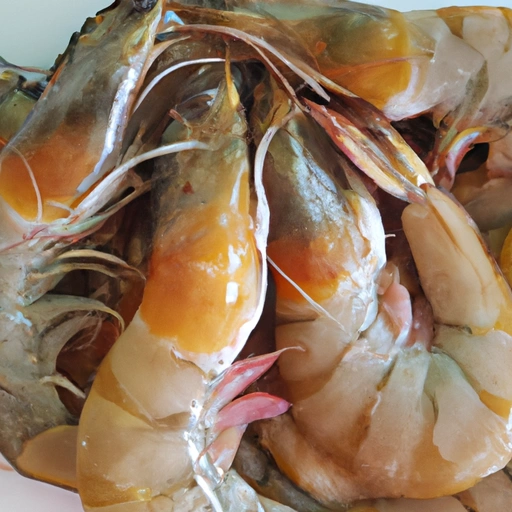Tiger Prawn
Description

Tiger prawns are a popular seafood ingredient known for their size, distinctive striped appearance, and rich, succulent flavor. They are a type of large shrimp that can be found in a variety of waters around the world, including the Indo-Pacific region. Tiger prawns are highly prized in culinary circles for their firm texture, which holds up well to a number of cooking methods, making them an adaptable ingredient in both American and European cuisines.
Common uses
Tiger prawns are commonly used in a variety of dishes. They can be served as appetizers, such as prawn cocktail, or as the main protein in entrees like paella, curry, and pasta dishes. They are also a popular choice for grilling, often marinated and skewered, or used in stir-fries, salads, and as sushi or sashimi.
Nutritional value
Calories
100 grams of cooked tiger prawns contain approximately 99 calories (415 kilojoules).
Protein
Each 100 grams of cooked tiger prawns offers about 24 grams of protein.
Fat
Tiger prawns contain roughly 0.3 grams of fat per 100 grams when cooked.
Carbohydrates
Carbohydrates are negligible in tiger prawns, at less than 1 gram per 100 grams.
Vitamins
Tiger prawns are a source of B-vitamins, particularly vitamin B12, and have traces of vitamin E and vitamin A.
Minerals
They are rich in minerals such as selenium, phosphorus, and also contain calcium, iron, and zinc.
Health benefits
Tiger prawns are a low-calorie source of protein which is beneficial for muscle building and repair. The B-vitamins present in prawns can help support brain health and metabolism. Minerals like selenium play a critical role in maintaining a healthy immune system.
Potential risks
Some individuals may have allergic reactions to shellfish, including tiger prawns. Overconsumption can lead to increased dietary cholesterol. It's also important to source prawns from reputable suppliers to avoid issues related to poor aquaculture practices, such as high levels of pollutants or antibiotics.
Common recipes
Tiger prawns can be found in recipes such as shrimp scampi (US), prawn curry (UK), and gambas al ajillo (Spain). They are also a key ingredient in many Asian dishes like Thai prawn stir-fry and Japanese tempura.
Cooking methods
The versatility of tiger prawns allows them to be boiled, grilled, broiled, sautéed, or deep-fried. Cooking times vary, but they are generally quick to prepare, often cooked in minutes, depending on the method.
Pairing with other ingredients
Tiger prawns pair well with a range of flavors, including garlic, chilli, lemon, and herbs such as parsley, cilantro, or basil. They complement various other ingredients like pasta, rice, and vegetables.
Summary
Tiger prawns are a cherished seafood ingredient renowned for their flavor and versatility. They contribute significantly to global cuisines with their nutritional benefits and adaptability to a range of cooking styles. Whether in American, European, or Asian dishes, tiger prawns add substantial value and enjoyment to any meal.